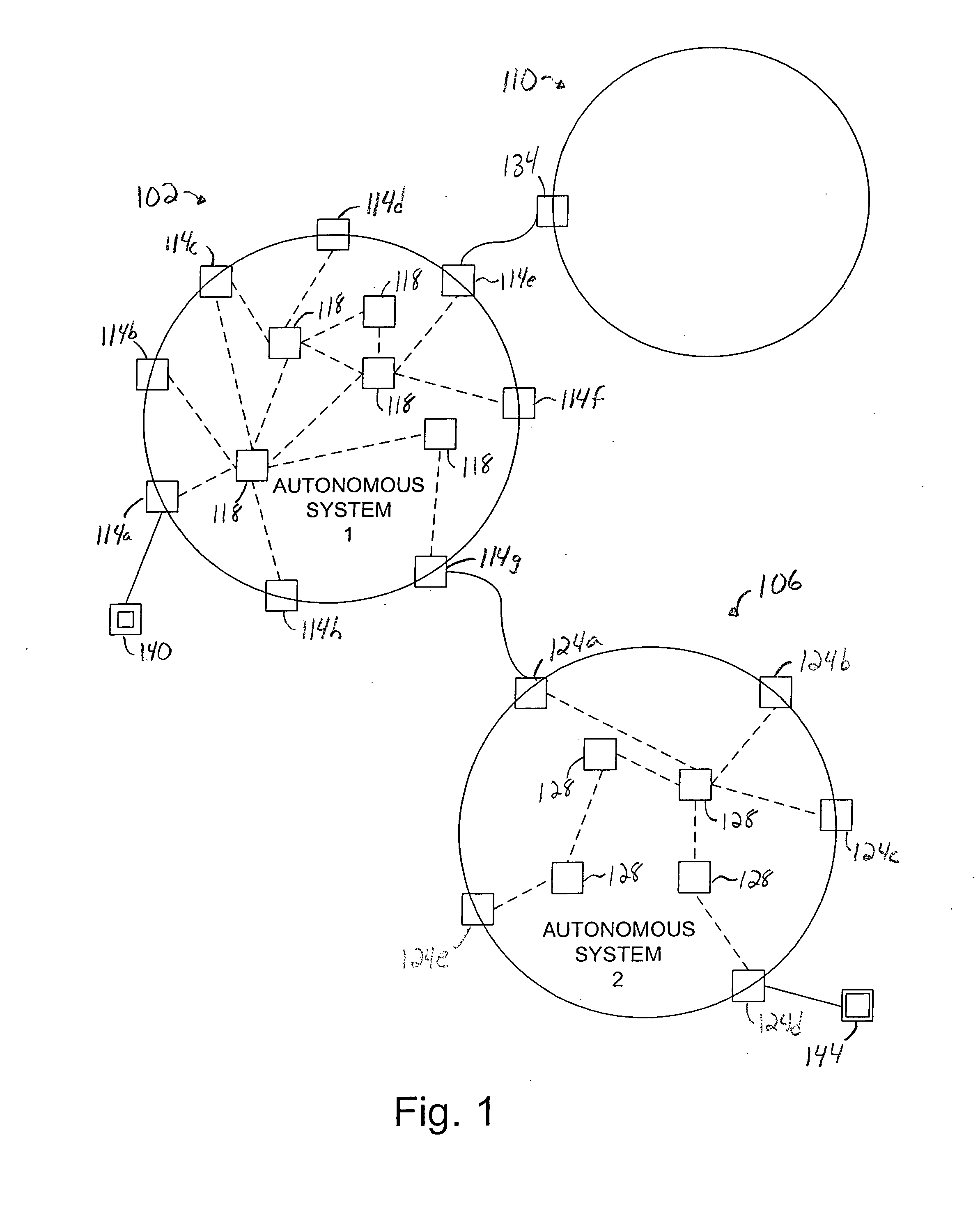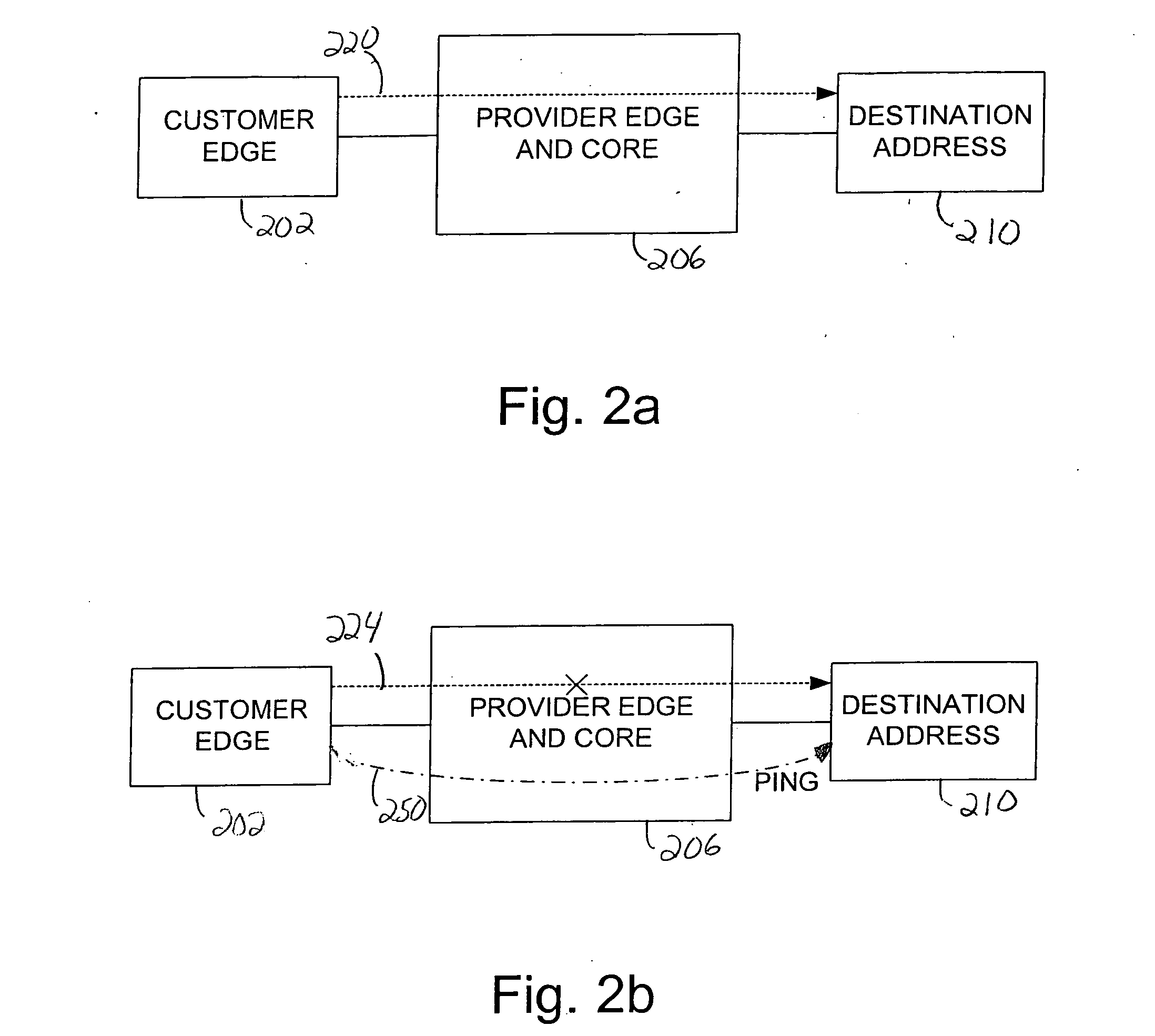Detection of forwarding problems for external prefixes
a technology of forwarding problems and prefixes, applied in the field of network systems, can solve problems such as difficulty in collocating additional equipment, provider may not be aware of a failure within its network, and the demand for data communication services is growing at an explosive ra
- Summary
- Abstract
- Description
- Claims
- Application Information
AI Technical Summary
Benefits of technology
Problems solved by technology
Method used
Image
Examples
Embodiment Construction
[0034] A network provider is generally unable to determine if there are failures in intermediate points or nodes of its network which prevent messages from being properly forwarded unless a customer who uses the network notifies the network provider of a potential failure within the network. The inability for a network provider to determine on its own that message forwarding may not be properly set up on at least one node of its network is inefficient, since if no customer notifies the network provider of a potential failure, a failed node may remain substantially undetected for a relatively long period of time. When a network provider does not know about a failed node, the network provider may not take steps to rectify the situation. In addition, customers who are unable to successfully send or receive messages through the provider network may be inconvenienced when their messages are lost.
[0035] The ability for a provider to determine whether an autonomous system or network owned...
PUM
 Login to View More
Login to View More Abstract
Description
Claims
Application Information
 Login to View More
Login to View More - R&D
- Intellectual Property
- Life Sciences
- Materials
- Tech Scout
- Unparalleled Data Quality
- Higher Quality Content
- 60% Fewer Hallucinations
Browse by: Latest US Patents, China's latest patents, Technical Efficacy Thesaurus, Application Domain, Technology Topic, Popular Technical Reports.
© 2025 PatSnap. All rights reserved.Legal|Privacy policy|Modern Slavery Act Transparency Statement|Sitemap|About US| Contact US: help@patsnap.com



